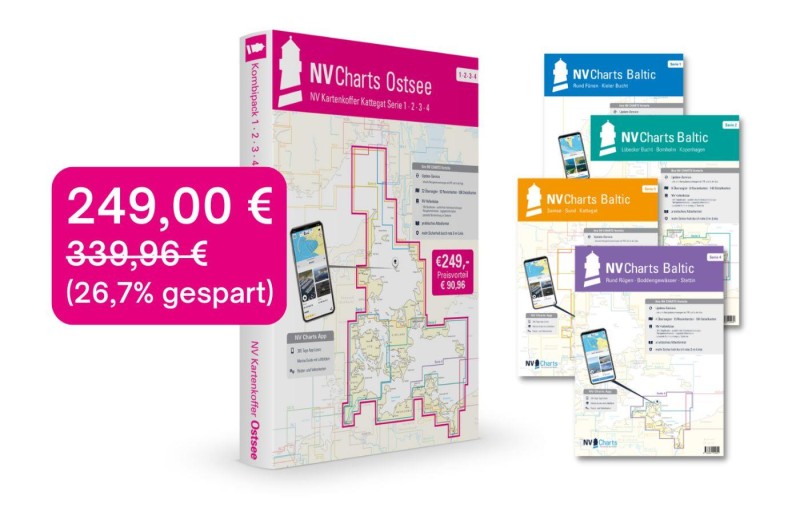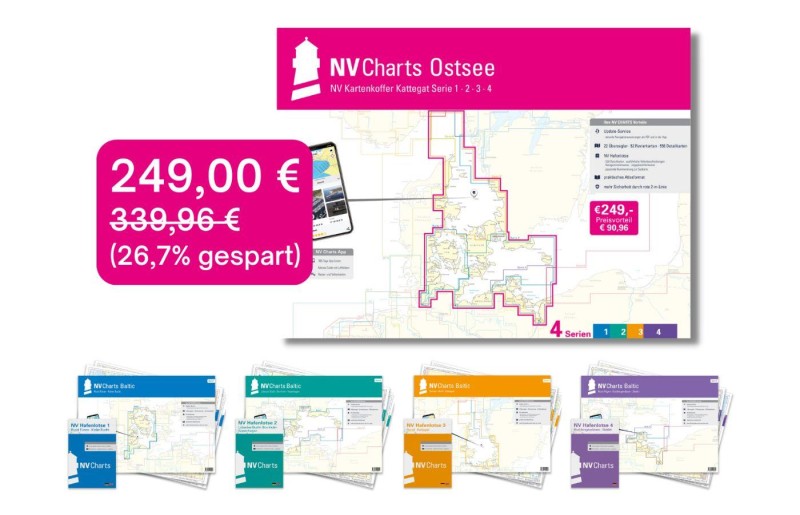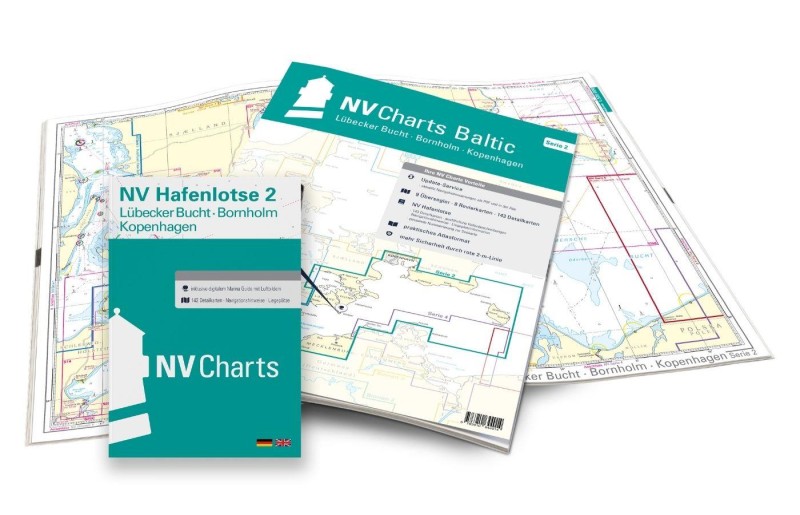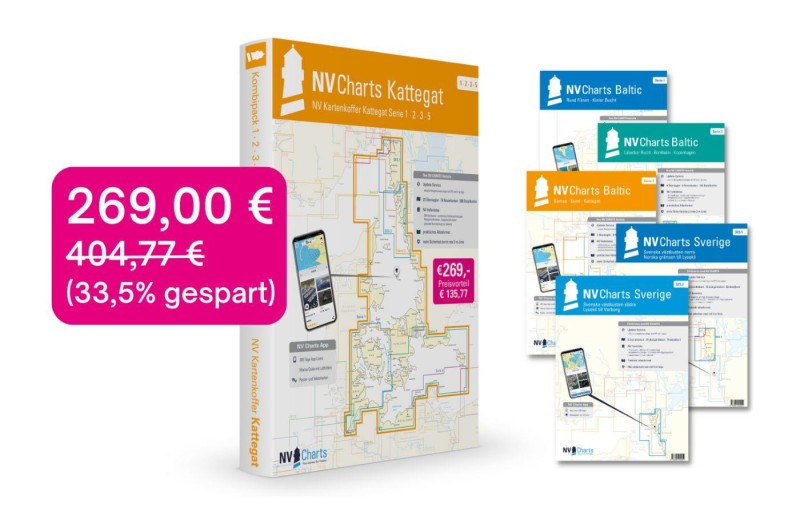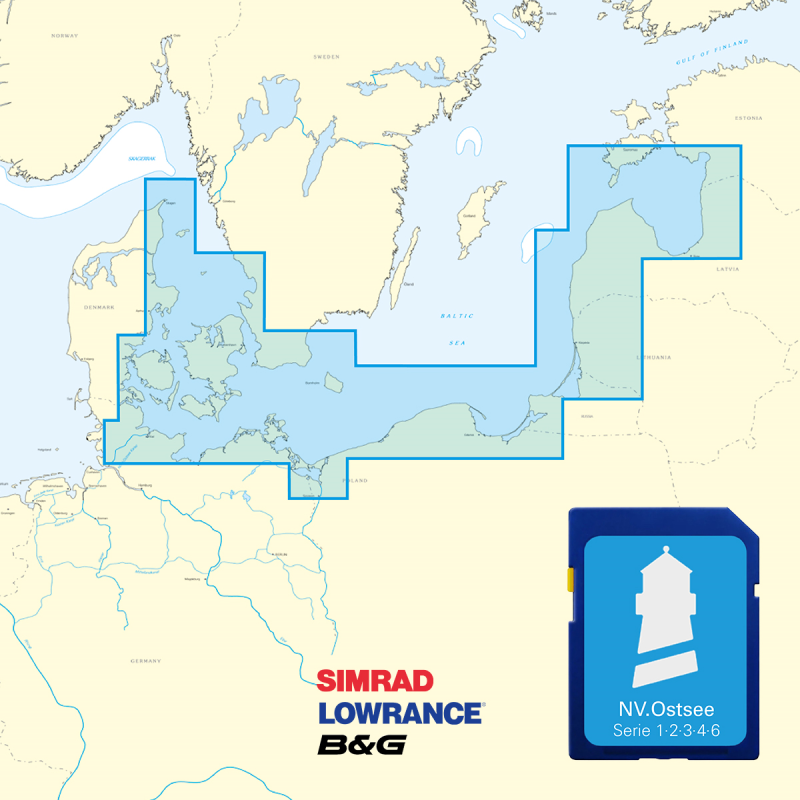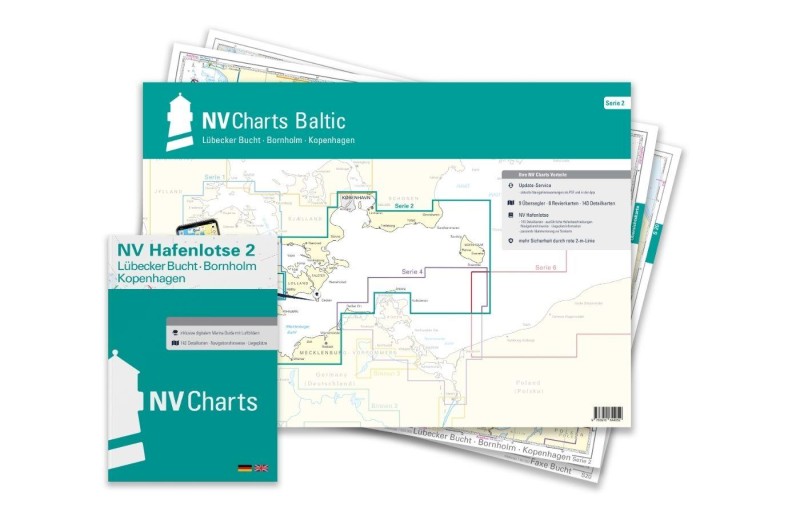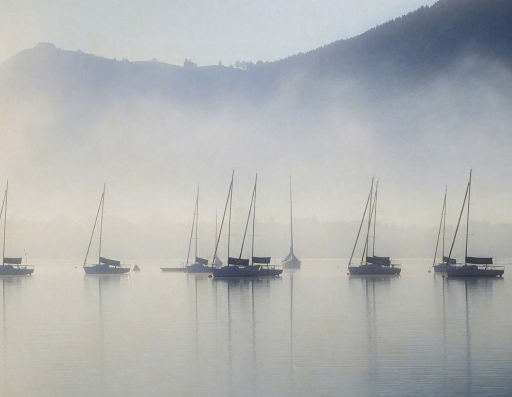Nysted
Marina near Nysted
Latitude
54° 39’ 50.9” NLongitude
11° 43’ 42.7” EDescription
Small, cosy town at the southern entrance to Guldborg Sound in scenic surroundings, certainly one of the most popular weekend destinations for German pleasure boaters.
NV Cruising Guide
Navigation
The approach to Nysted via the unlit fairway is only recommended during the day. The approach is from the south via the fairway to the west of Gedser with a water depth of approx. 4.5m. The buoyage of "Østre Mærker" is difficult to make out in uncertain weather.
The buoyed fairway of Nysted, which has a target depth of 3.5m in the inner part as a dredging channel, tends to change. The buoyage is adjusted from time to time. As the last official survey of the area took place a long time ago, strong deviations must be expected.
Berths
Guest boats are moored at about 2m water depth, preferably at the bulwark head. You can also moor at the quay, but commercial shipping has priority here. The water depth is 3.5m. Boats wider than 3,8m fit only at the Handelskai.
Surroundings
The very beautifully situated, worth seeing small town offers a very good leisure offer and sufficient supply possibilities. A boat builder is on site, fuel can be bunkered at the harbour.
The small boat harbours Stubberup approx. 2sm and Errindlev approx. 6sm west of Nysted at the Lambo fairway should only be approached by those familiar with the area.
NV Land Guide
Whoever has always driven past Nysted has missed out on something. But there is also a positive side to this omission, in that you have saved a treat for yourself. Undeniably, this cosy spot is the "pearl" of Lolland.
And the numerous sights in and around Nysted are also high on the popularity scale. The mill of Kettinge, the Frejlev forest, the church of Nysted and much more are worth the sea voyage and the longer visit. Therefore, more than one day's break should be planned for the discovery of the old town and its surroundings. However, it is advisable not to call at this place during the main holiday season.
Nysted shows its most beautiful side to the incoming sports skipper. Approaching the jetties of the natural harbour, Aalholm Castle peeps out from behind the large trees on the port side. To starboard ahead lies the medieval town on a slight hill. Spared the ugliness of modern architecture, left behind by industry and carefully cared for by preservationists, this gem is also a popular tourist destination among Danes.
The small fishermen's houses lined up in Slotsgade and Skibrostræde, the rustic half-timbered buildings and the packing house "Clausens Speicher" in Adelgade reveal a lot about the history of the town, which is closely linked to Aalholm Castle. The forerunner of Nysted was probably a fishing village established around the year 1000. With the building of the castle, the servants of the nobility joined in and eventually the harbour became an important loading point for the export of agricultural goods. The economic decline followed in the 19th century, when the small town also lost its economic connection due to the lack of a railway connection. It was only later that tracks were laid and a railway station built in Jernbanegade, from which no trains depart today.
The old market (Gammel Torv) was the centre of the town until well into the last century; the mayor's house and the pastor's house were next to each other here. The entire row of houses by the church is a listed building. Where the main entrance to the church is today, there used to be one of the most famous Latin schools in the country, whose most famous pupil was the theologian Niels Hemmingsen. However, the dwindling importance of Latin due to the rise of Protestantism meant that by 1740 only four pupils were still attending the school.
The church is a Gothic nave dating from 1330. The tower, which was added later, did not have its high arrow-like spire added until 1649. After the Reformation, people didn't really know what to do with the beautiful 14th century sacristy; until it was acquired by Just Franz von Pappenheim in 1649 as a private family chapel. His initials can still be seen on the gable, and the family coat of arms on the sandstone slab further down. The magnificent altarpiece was donated in 1693 by the steward Fredrich Suhr; the magnificent superstructure in cartilage baroque is from the school of Henrik Werner. The Last Supper and the Resurrection are the themes of the expressive relief.
An equally impressive work is the 18-voice organ. Parish pastor Knud M. Lerche was immortalized in a full life-size epithaph - a stately figure. Through the wrought-iron door is the Raben family chapel, whose history is closely linked to that of Ålholm Castle. Until 1964 there were still 13 coffins of the family here, today there are only five sarcophagi. The rest have been moved to the cemetery. Incidentally, the oldest of the four church bells dates back to the 13th century.
When the weather is nice, you should take a look at Nysted from above, namely from the viewing platform of the old water tower, which is also a forum for art exhibitions. From up here, you can get a closer look at Ålholm Castle.
Ålholm is one of the oldest inhabited castles in Europe. After changing hands, the building itself is now closed to the public, like most other private castles. It is said that already the Vikings were attracted by the protected and at the same time exposed location to build a castle. Most likely, the Viking fortress was still completely surrounded by water. The castle is still partly surrounded by a pond, moat and Baltic Sea. The castle park, which is still open to the public, invites you to take a walk.
Many noble and royal families have made their architectural contribution to the present appearance of the residence. Queen Margrete I, for example, had the northern tower built in 1410. On the occasion of the visit of Frederik II and Queen Sophia in 1585, their names were written on the wall of the Knights' Hall. The development of weapons was shown in a collection whose oldest pieces date back to 1100. Other castle collections include an extensive collection of butterflies.
One of the most impressive halls is the castle's grand dining room, with a table set for 30 people. Suitably enlarged, 90 people can be seated at it. Important figures in history dined here: Edward VII, Emperor William, Gustav V, Frederik VIII and Christian X were among the illustrious guests.
The so-called golden guest room in the east wing is perhaps the most beautiful room in the palace. It is in pure Louis Seize style. The wood paneling, fireplace and wall panels were actually installed during the time of Louis XVI. Each guest room is, of course, adjoined by its own bathroom.
In addition, the guest room of kings and princes included a dressing room with a secret door through which the chambermaid or valet could enter the dressing room to help their lords and ladies dress and make up. The "privy", the toilet of the time, was (expediently) free-hanging over the moat.
With its large free-standing wooden stove and copper pans and pots, the castle kitchen is another gem of the nobleman's residence. Special finesse: The flue to the chimney runs under the floor. Elevators take food to the dining room or the west wing.
The prison cellar, where Kristoffer II was imprisoned (until he was poisoned in 1332), used to send a cold shiver down visitors' spines.
This ultimately made the king a victim of his great power policy in northern Germany, which he could only finance through strict taxation of the nobility and clergy. He was also resented for not keeping his promise after the king's election to let the estates co-govern.
After his first expulsion to Mecklenburg, he temporarily returned to the throne, but was defeated by Gerhard at Lohheide on the Danewerk in 1330. He was forced to retreat to Lolland, where he was imprisoned by the nobility (see also Sakskøbing).
The once largest automobile museum in northern Europe on the estate is now itself history. After water damage due to poorly kept building fabric, the repair seemed obviously too costly. In the summer of 2012, the entire collection finally went under the hammer.
One of the sights in the area is the mill and church of the old village of Kettinge, five kilometres north of Nysted. Built in 1891 on the site of a derelict trestle mill, the Dutchman's mill is a large representative of its kind, with an imposing wing span of 31 cubits (almost 20 metres). The sail area of the long wings could be reefed when the wind was too strong. The structure is now the property of the municipality of Kettinge, which bought the mill in 1945 as a memorial to the liberation of Denmark. Unfortunately, the interior (see view) can only be visited every Tuesday during the Danish school holidays, from 2pm to 5pm.
Originally, it is thought, Kettinge church was a wooden building. Its vault paintings are probably by one of the great artists of the early 16th century, the Elmelund Master. The creation of the earth, the expulsion from the Garden of Eden and the passion of Jesus are the themes of the paintings. Tumuli, tumuli and tumuli again stand in the forest of Frejlev. A trip to the forest at the southern end of Guldborgsund, which is full of ancient graves, is highly recommended. Unbelievable but true: in this small forest, which measures about four kilometres by one kilometre, and its immediate surroundings are more than 100(!) protected prehistoric monuments from the Peasant Stone Age and the older and younger Bronze Age. The forest here is only 2000 years old. Around 3000 to 4000 years ago, in the period when the graves were laid out, the land was farmland and residential. Given the large number of graves, it is essential to choose which ones to visit (see map). If, for example, you choose the forest path opposite Stenvængegårdsvej as the starting point (A) of your tour, you will have the opportunity to get an idea of the grave types of the different periods within one to two hours.
At point B you will find an open passage grave, about 4000 years old, a mass grave from the Peasant Stone Age. Under one of the stones, jewellery consisting of four double bronze chains was found in a clay bowl during restoration in 1924. It is now kept in the National Museum of Copenhagen and is so well preserved that all the chain links can be moved. Because the jewellery is much younger than the grave, it is presumed that it was enclosed as an offering at a sacred site. During the excavation of this six meter long burial chamber, axes, chisels and amber beads were also found. Incidentally, many of these finds can be seen on Lolland, at the Monastery Museum in Maribo (see Maribo).
The grave at point C is an unusually well-preserved round grave. The chamber of the approximately 5000 year old single grave of the Peasant Stone Age is also completely preserved. Only 200 metres further along this path (point D) is the only fully enclosed long grave. Through a narrow passage you enter the 4000 year old gloomy tomb. On the other side of the path, two long dolmens lie opposite this grave, which were originally covered with flat capstones. Point F offers a magnificent view over Guldborgsund in addition to barrows. Bones have been found here that indicate burial 2500 years ago during the Late Bronze Age. At point G there are again two long dolmens and 100 metres further on King Green (Kong Grøn) was buried in a barrow over 3000 years ago. Although it had been passed down for thousands of years that the king found his final resting place here, the stories surrounding the king were forgotten.
Ten kilometres northwest of Nysted lies "Fuglehaven", a bird park with almost 100 aviaries and more than 300 different species of birds from canaries to Jaco parrots. This grey parrot even breeds here, which rarely happens with this animal in captivity. In addition to the numerous tropical birds, over 15 species of pheasant can be seen on the 4000 m² grounds at Brejningevej 19, 600 m² of which are covered. During the summer months the park is open daily. An attraction on the outskirts is a small mill on the grounds, which is used to heat the tropical house. For the way back, one can strengthen oneself on a terrace. However, you have to bring your own filled picnic basket.
"Fuglsang", located halfway between Nykøbing on Falster and Nysted, gives visitors an impression of Danish manor house culture. The main building from 1869 and the 15-hectare park are open to everyone as a foundation of the national church. The manor house is the setting for a number of cultural events throughout the year. Classical music and theatre evenings as well as readings take place here. "Fuglsang" is at the same time a noble boarding house with original inventory in rooms and lounges.
On the southeastern headland, passed on starboard entering, a walkway leads along a camping site and a cottage area. Bicycles are available for rent at the campground. By the way, a fish shop and a smokehouse are located in the red-brown wooden houses directly at the tastefully designed harbour. There is a special atmosphere here on one of the weekends in the first half of July, when the harbour festival is celebrated. Beautiful beaches stretch along the coast on both sides of the fjord entrance.
The wind farm "Nysted Havmøllepark", located south off the coast near Rødsand, produces electricity for 145,000 households with its 72 gigantic wind turbines. The towers are 69 m high and the rotor blades are 80 m long. The wind turbine is one of the largest in the world. An information centre in Nysted provides further details.
Stubberup:
The harbour is hardly suitable for yachts, especially as almost all places are occupied by small fishing boats. Yet the very small town with its half-timbered houses at the harbor is well worth a visit. So if you manage to get a place with your flat-going boat, you will find an old fishing settlement, where there is even a merchant. The original picture is somewhat spoiled by a so-called "Feriotel" (combination of restaurant and holiday houses), which stands at the edge of the village. There is hardly any car traffic here.
The large anchor on the harbour apron is said to be from a frigate that sank in a storm off Stubberup. There are also a few fishermen's huts, an occasional kiosk and a sanitary building.
Lundehøje:
This small boat harbour east of Nysted and Errindlev is reserved for locals.
Errindlev:
The small fishing harbour is not equipped for guests. There are no utilities or attractions, the landscape is somewhat monotonous and the distance to the village is about six kilometres. Moreover, the water of the harbour is shallow, the approach is difficult and the fishermen are not very enthusiastic about visitors. In short: There is actually no reason to go here.
Marina Information
| Max Depth | 3.5 m |
Contact
| Phone | +45 5487 1273 |
| Please enable Javascript to read |
Surroundings
Electricity
Water
Toilet
Shower
Restaurant
Crane
Atm
Internet
Grocery
Ramp
Public Transport
Bikerental
Garbage
Comments
You can add comments with the NV Charts App (Windows - iOS - Android - Mac OSX).
You can download the current version at nvcharts.com/app.
